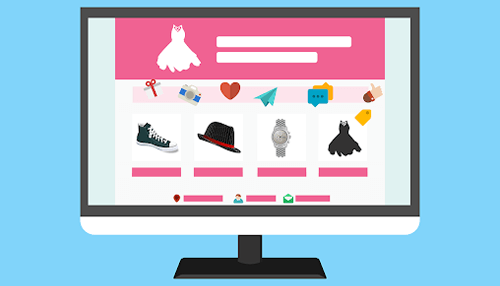Online shopping is becoming a main type of any commerce business, especially now in the time of Covid-19 pandemic. During the various lockdowns we had to live through, more and more businesses were forced to close their physical locations and transfer their operations online in order to be able to reach their customers. If they wanted to stay competitive on the business market, they had no choice but to undergo digital transformation.
Shopify has made this process easier, quicker and relatively cheap, especially for small businesses who sometimes don’t have enough means to afford custom website builds or enough employees to make everything run smoothly. It provides the technology that allows sellers to set up their online store and sell their product. Shopify also includes different features and tools like inventory tracking, automatic carrier shipping rates or even social media integration, all of which are meant to help sellers reach their potential.
However, by transferring their business online, e-commerce companies are also increasing the risk of encountering fraud. The good news is that you can take certain steps to ensure this doesn’t happen to you, one of which is implementing Shopify’s Fraud Protect solution that offers basic protection against chargebacks. But, in order to raise the level of protection it would be wise to invest in recommended Shopify apps that can help you prevent fraud attempts and maximize the revenue.
Recognizing Shopify fraud
There are few different types of fraud that can happen on Shopify, some of which affect customers, while the others ones affect merchants. According to the research conducted by Fakespot in 2021, nearly 21% of Shopify stores are related to fraudulent practices and present a risk to their customers. Unlike the fraud attempts that are targeting merchants, these ones can actually be resolved in a way that benefits customers as they can request a chargeback from their credit card provider and get their funds back. Merchant related fraud attempts are quite different, as they usually don’t receive anything back.
There are two main types of Shopify fraud that affect merchants and that is “fraudulent chargebacks” and “fraudulent purchases”.
Fraudulent chargebacks happen when the customer receives the item but still claims the order was never received when requesting a chargeback from their card provider. This results in merchants not only losing the product but also having a financial loss in the amount of the order. Fraudulent purchases happen when the order is not made by the legitimate card holder, but by the fraudster who is using stolen identity. Once the legitimate owner of the stolen payment details notices unauthorized transactions they will initiate a chargeback and get their money back. Meanwhile the cybercriminal will get what they wanted, and merchant will be left empty-handed.
One of the efficient tactics cybercriminals use is called triangulation fraud. With this type of fraud, cybercriminals will create their own fake store selling some mainstream products that customers will buy. Once the customer pays for their item, fraudsters will have their credit card details which they can use for various fraudulent actions. To keep customers from getting suspicious, fraudsters will buy the item from a real website with those stolen credit card details and ship it to the customer’s address. Eventually, customers will notice unauthorized transactions and request a chargeback.
Preventing Spotify fraud
Spotify fraud can affect anyone, from the most high-profile eCommerce stores to the smallest shop which is why it is imperative to invest in fraud prevention apps that can help you prevent cyber attack even happening to you. They offer you a level of security you wouldn’t be able to accomplish just by using Shopify’s Fraud Protect solution.
- In addition to using proper tools, there are some steps you can take to ensure the safety of your store.
- Be vigilant and investigate high risk orders – You can always call the customer to confirm the legitimate customer made an order.
- Ensuring product photos and descriptions are accurate – This way you can avoid customers claiming the product received is not what they ordered.
- Make sure your policies are easily understandable and even easier to reach – By having your policy accessible, you can discourage “Fraudulent chargeback”.
- Keep an eye on red flags that might indicate the customer is a fraudster – Maybe the IP address is not matching the shipping address? Customer had several declined transactions in a span of minutes? CCV number wasn’t provided? Those are possible signs of fraud, and they demand further actions.
Shopify brings various benefits to the merchants, but it also brings dangers. In order to reach their full potential, merchants need to start being more proactive and defend their business from the rising threat of cyber attack.




